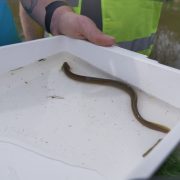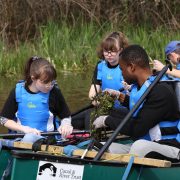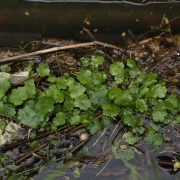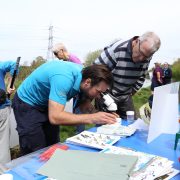It’s Volunteers’ Week, and we want to say a huge THANK YOU to the amazing team of community volunteers working across our Nature Recovery Corridor project!
Here at the zoo we work with up to 250 volunteers every year, who play a vital role in achieving our mission of preventing extinction. They work in a range of roles and different programmes, including the incredible community volunteers who are contributing to our Nature Recovery Corridor project.
Our goal is to create a thriving 10-mile stretch of interconnected ecosystems that showcases what British nature can be. Our volunteers have been hard at work along the Nature Recovery Corridor, creating new habitats for wildlife, improving existing ones and feeling good about it:
I think volunteering brings people together; the sense of community is really important and that feeling of being empowered to take charge of your future.
Leah, Community Volunteer
Leah continues to say:
“What I get out of it is that I can meet like-minded people who also care about the environment, wildlife, and conservation. At the end of the day, protecting wildlife is not only important for them, obviously, but it’s just as important for us.”
Recently some of our community volunteers took part in a Paddle Day, where they took to the water to remove bucket loads of an invasive plant called pennywort. Pennywort can block water flow, crowd out native plants and take oxygen from the water. So by removing it our volunteers are making a huge difference, giving wildlife a better chance to thrive.
As well as improving the ecosystem, the team also took the chance to spot lots of wildlife too! The group carried out a wildlife recording activity alongside the pennywort removal, and spotted a whole host of diverse wildlife. Ranging from foxes playing in the opposite fields, buzzards soaring overhead, baby moorhens, a swan and even an eel!
Other community volunteers projects have been taking place throughout the year, including the creation of a new orchard on the zoo estate.
In March, Community Volunteers helped to plant what will become a traditionally managed orchard. 30 fruit trees were planted on the zoo estate, with a further 60 to be planted in the Autumn.
“Starting a traditionally managed orchard from scratch is no easy task” said Ben Harris, Habitat Creation Coordinator.
Ben continues: “It can take many years to reach their full conservation value – mostly in the form of standing deadwood and rotting heartwood. The brilliant work done by the volunteers in planting, staking, and mulching the young trees means we have started this process, and wildlife is already benefitting. We can already see that the trees have produced blossoms, which benefits pollinators, such as bees and butterflies, and the grassland management will benefit small mammals and mustelids by providing cover and foraging opportunities.”
Check out this video to hear first hand from some of our amazing community volunteers, and see the important work they carry out!
If you’re looking to fit some micro-volunteering in around a busy schedule, aiming to commit to something every week or do improvements for wildlife in your own outdoor spaces; there are many opportunities to act for wildlife with us!
Visit our Wildlife Connections page or email us to find out how you can take part in our community volunteering and start making a real difference.

This project is funded by the Government’s Green Recovery Challenge Fund. The fund was developed by Defra and its Arm’s-Length Bodies. It is being delivered by The National Lottery Heritage Fund in partnership with Natural England, the Environment Agency and Forestry Commission



